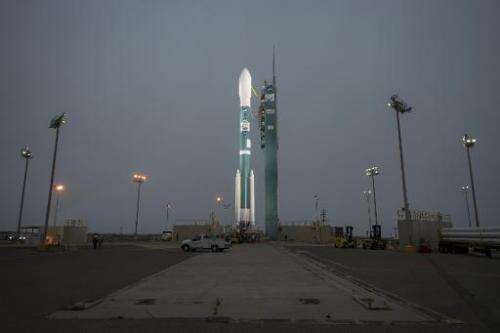The United Launch Alliance Delta II rocket with the Orbiting Carbon Observatory-2 (OCO-2) satellite onboard, is seen moments after the launch gantry was moved at the Space Launch Complex 2, Monday, June 30, 2014, Vandenberg Air Force Base, California
The US space agency is to launch on Tuesday a satellite that tracks atmospheric carbon dioxide, a leading greenhouse gas that contributes to global warming.
The launch of the Orbiting Carbon Observatory-2 is expected at 2:56 am Pacific time (0956 GMT) from Vandenberg Air Force Base in California.
"Now that humans are acknowledging the environmental effects of our dependence on fossil fuels and other carbon dioxide-emitting activities, our goal is to analyze the sources and sinks of this carbon dioxide and to find better ways to manage it," said Gregg Marland, a professor in the Geology Department of Appalachian State University, Boone, North Carolina.
The satellite will take 24 measurements every second, about a million per day, but clouds are a major obstacle.
Its field of view is about one square mile (three square kilometers), so even wispy clouds can obscure its measurements.
NASA expects about 100,000 of the satellite's data snapshots from around the world daily will be sufficiently cloud-free to be useful.
Kevin Gurney, an associate professor at Arizona State University, Tempe, said the satellite will contribute to a series of NASA-funded efforts to measure fossil fuel emissions.
"This research and OCO-2 together will act like partners in closing the carbon budget, with my data products estimating movements from the bottom up and OCO-2 estimating sources from the top down," Gurney said.
Its launch window on Tuesday is quite short, just 30 seconds.
"The timing has to be so precise because OCO-2 will join the A-Train, a constellation of five other international Earth-observing satellites that fly very close together to make nearly simultaneous measurements of our planet," the NASA website said.
If it misses the launch window, there may be another launch attempt Wednesday.
However, weather conditions were expected to be 100 percent favorable for launch.
© 2014 AFP
























